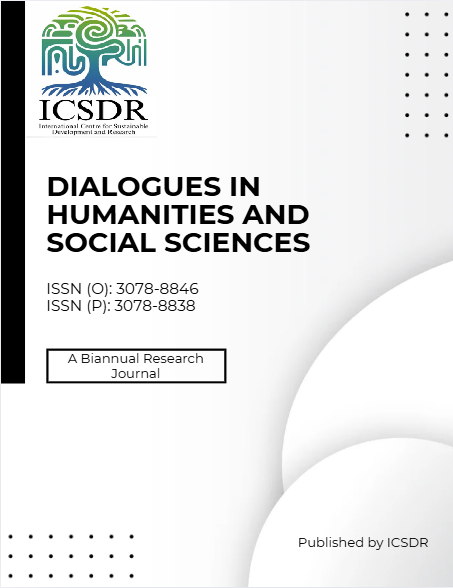Hegemonic Construction of Gender Structures: Analyzing Patriarchal conflict in A Woman is No Man
Keywords:
Gender oppression, dialogic voices, textual analysis , close readingAbstract
This research undertakes a critical textual analysis of Etaf Rum’s debut novel “A Woman is No Man” to explore the construction of hegemonic gender voices/structures and the pervasive oppression of women through Mikhail Bakhtin's concept of dialogic heteroglossia. Through a close reading of the text, this study aims to illuminate the generational transmission and resistance of patriarchal norms among the voices in the text. Through dialogic interactions among the voices and the evolution of these characters, Rum exposes how oppressive gender ideologies are internalized, perpetuated, and contested within the text. By examining the textualized forms of gender oppression in “A Woman is No Man”, this research aims to promote a more nuanced understanding of the complex patriarchal dynamics at play in literary representations of dialogic interactions of communication among the voices in the text and to signify the need for critical textual analysis in uncovering the ubiquitous mechanisms of gender oppression. This research explores how the novel assembles the social perspective of gender discrimination through its portrayal of Middle Eastern oppressive behavior towards their women. This study highlights how dialogic communication among these varying voices critiques and destabilizes gendered hegemony, paving pathways for reimagining female identity and agency.
Downloads
Published
Issue
Section
License
Copyright (c) 2023 Dialogues in Humanities and Social Sciences

This work is licensed under a Creative Commons Attribution-NonCommercial 4.0 International License.
DHSS is licensed under a Creative Commons Attribution-NonCommercial 4.0 International license (CC BY-NC 4.0). This license permits users to use, reproduce, disseminate, or display the article provided that the authors are the original creators and that the reuse is restricted to non-commercial purposes, i.e., is attributed to research or educational use, provided that the work is properly cited.

